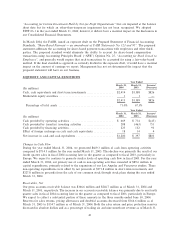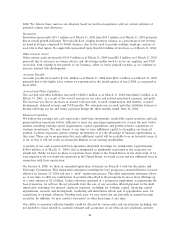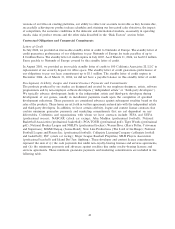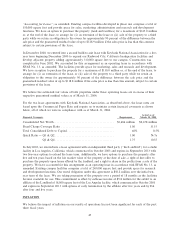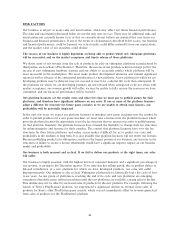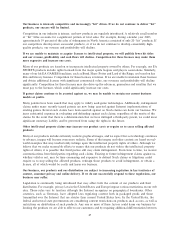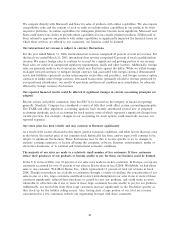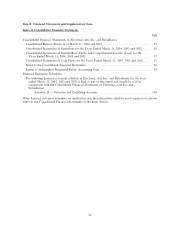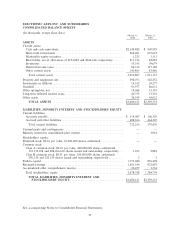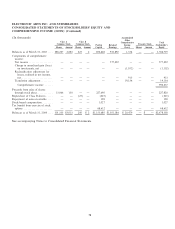Electronic Arts 2004 Annual Report Download - page 65
Download and view the complete annual report
Please find page 65 of the 2004 Electronic Arts annual report below. You can navigate through the pages in the report by either clicking on the pages listed below, or by using the keyword search tool below to find specific information within the annual report.Acquisitions, investments and other strategic transactions could result in operating diÇculties, dilution to
our investors and other negative consequences.
We have evaluated, and expect to continue to evaluate, a wide array of potential strategic transactions,
including (1) acquisitions of companies, businesses, intellectual properties, and other assets, and
(2) investments in new interactive entertainment businesses (for example, online and mobile games). Any of
these strategic transactions could be material to our Ñnancial condition and results of operations. Although we
regularly search for opportunities to engage in strategic transactions, we may not be successful in identifying
suitable opportunities. We may not be able to consummate potential acquisitions or investments or an
acquisition or investment may not enhance our business or may decrease rather than increase our earnings. In
addition, the process of integrating an acquired company or business, or successfully exploiting acquired
intellectual property or other assets, could divert a signiÑcant amount of our management's time and focus
and may create unforeseen operating diÇculties and expenditures. Additional risks we face include:
䡵The need to implement or remediate controls, procedures and policies appropriate for a public
company in an acquired company that prior to the acquisition lacked these controls, procedures and
policies,
䡵Cultural challenges associated with integrating employees from an acquired company or business
into our organization,
䡵Retaining employees from the businesses we acquire,
䡵The need to integrate an acquired company's accounting, management information, human resource
and other administrative systems to permit eÅective management, and
䡵To the extent that we engage in strategic transactions outside of the United States, we face
additional risks, including risks related to integration of operations across diÅerent cultures and
languages, currency risks and the particular economic, political and regulatory risks associated with
speciÑc countries.
Future acquisitions and investments could involve the issuance of our equity securities, potentially diluting our
existing stockholders, the incurrence of debt, contingent liabilities or amortization expenses, or write-oÅs of
goodwill, any of which could harm our Ñnancial condition. Our stockholders may not have the opportunity to
review, vote on or evaluate future acquisitions or investments.
We have begun the implementation of a common set of Ñnancial information systems throughout our
worldwide organization, which, if not completed in a successful and timely manner, could impede our
ability to accurately process, prepare and analyze important Ñnancial data.
As part of our eÅort to improve eÇciencies throughout our worldwide organization, we have begun the
implementation of a common set of practices, processes and Ñnancial information systems. The successful
conversion from our current Ñnancial information systems to new Ñnancial information systems entails a
number of risks due to the complexity of the conversion and implementation process. Such risks include
verifying the accuracy of the business data and information prior to conversion, the actual conversion of that
data and information to the new systems and then using that business data and information in the new
systems after the conversion. In addition, because the implementation is company-wide, there is a need for
substantial and comprehensive company-wide employee training. While testing of these new systems and
processes and training of employees are done in advance of implementation, there are inherent limitations in
our ability to simulate a full-scale operating environment in advance of implementation. Finally, there can be
no assurance that the conversion to, and the implementation of, the new Ñnancial information systems will
not impede our ability to accurately and timely process, prepare and analyze the Ñnancial data we use in
making operating decisions and which form the basis of the Ñnancial information we include in the periodic
reports we Ñle with the SEC.
50



